Text
Possible Methods

In my previous post, I discussed why it is necessary to provide languages services for Hindi and other Indian languages. Now that it is known that it would be beneficial to provide these services, it cannot happen automatically, and there are definitely setbacks, as demonstrated by the weaknesses stated in the previous post. So, these are a few solutions to this particular issue that could potentially prove to be effective.
As stated in the previous post, there definitely are fees involved when trying to incorporate language interpreter services into healthcare locations. Those fees, as stated in this paper, could range from training hospital staff, paying for separate interpreter services for the hospital itself, and even bringing in technology if there are languages that are not covered by actual individuals. All of these expenses are very likely to be costly to a hospital, and likely to cause an extension to their yearly budget plan.

While there definitely will be an increase in expenditure to provide this language interpreter service, that does not mean it will be as costly from the very beginning. To start with, it would be helpful to provide this service for the areas where there is a large Indian population, and then eventually increasing it as needed. According to this census in 2010, those areas include New York-Northern Newark, Chicago, Los Angeles, Dallas, San Jose, Miami, Detroit, Atlanta, etc. Each of these locations each have at least 100,000 Indians, and most of them have a much larger number than just 100,000. Out of these Indians, there is definitely quite a number of Indians that are LEP. Many of the Indians that are LEP (around 26%) are Indians who have recently immigrated to the US, since they have not been exposed to the change in main language for a long time. This 26% of Indian immigrants who are LEP definitely need to have access to quality healthcare treatment. Thus, to reduce expenditure at first put also pinpoint the locations that need this language interpreter service more, it would be efficient to include this service in the regions where there is a large Indian population.
Another way to reduce the barriers on this service while simultaneously expanding it is to keep the languages translated to a minimum at first, and then gradually increasing it as needed. India has a variety of languages, therefore there are also many Indians in the US who speak those languages. However, the downside of this is that the number of individuals who speak each language is not evenly distributed. Fortunately, English is a prominent language taught and utilized in schools and workplaces, and Hindi has also been a prominent language for some time now. If only the most popular Indian languages were included in the language interpretation service at first, then that would be able to cover a significant portion of the LEP Indian population. Again, according to the US census, the two most popular Indian languages are Hindi and Gujarati. If these two languages were included in the beginning, that would help significantly.
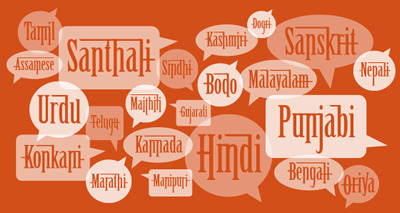
Taking these two possible methods into consideration, they very well could be utilized hand in hand. Establishing the Indian language interpretation services with Hindi and Gujarati in healthcare locations in regions that have a large Indian population would be able to increase the effectiveness of the service and increase the amount of individuals that come into the hospital. Healthcare providers could also expand on these two combined methods by deciding the Indian languages that would be included in the service by determining the more popular Indian languages spoken in that specific region that has a large Indian population. Those Indian languages selected do not have to be Hindi and Gujarati, but depend more on the exact place where that healthcare provider is located so that it would prove to be more effective. For instance, in the Tampa region, the Telugu-speaking population is definitely significant in numbers, so it would be beneficial to have Telugu included as one of the languages in the language access sevices in Tampa healthcare provider locations.
Photo credits: 1st, 2nd, 3rd
0 notes
Video
youtube
The second part of the interview with my mom about the inclusion of Indian languages in the translation/interpretation services offered by healthcare providers.
NOTE: While the video is comprehensible despite many of the non-English portions, it is still suggested to read the transcript down below for a better understanding.
Transcript:
Q: Are those languages the same as the more widely spoken languages here in the Tampa region?
Akhila; yes they’re the same as the more widely spoken languages here, like across the US. Those people from Gujarati came first and came much before and have settled here. They have settled here from many many years ago, and have many generations of people here, almost 3rd or 4th generation of them are here. Thats why Gujarati people have their own culture and their own temple/place of worship. There are a lot of those kinds of things. They’re also quite educated like doctors, lawyers, and accounts. There are a lot of those types of people as well. So yeah, Gujarati, Hindi, and then Telugu speaking people are also coming into the Tampa Bay area, a lot more than before.
Q: How do you think Indian language interpreting services in hospitals can help Indian patients?
Akhila: If it’s there, it will definitely help. This is because the people who are coming here now are the younger generation. Their parents are from small towns, villages, and small cities. When they come, even if they do have education, that education they learned in their mother tongue. They’ll go to college/university, and wherever they go their own mother tongue they’ll learn in their own language, without any English fluency. In Indian culture, as the parents age, the children take of the elderly parents. So, when they visit, let’s say someone isn’t well and is hospitalized, like some emergency and they are hospitalized. When the parents come over and help, when they try to communicate with the doctor, the language is a barrier. Since they don’t know English, it is a barrier. If there was a translator or a narrator in the hospital, if they provide it, to be able to speak face to face it would make it easier. For the parents, they would find it easier to understand the doctor. since they can understand the doctor, they can feel more confident and comfortable. and they will be able to achieve peace of mind. since the children end up living with their parents when their parents get old. you know, it definitely is a plus point having an interpreter in the hospital. especially, in todays generations when young people are immigrating into the United States when their parents come, interpreters in healthcare will help, such as with the doctors since they don’t have to stress out. and the same is with the parents, it will be easier.
Q: What Indian languages do you think should be included in the language translations services offered in hospitals.
Akhila: predominantly from the majority of the Indians, the Hindi speaking population, Gujarati speaking population, from those that come from India, if you input those two languages, it will help a lot. In India, many of people speak Hindi. People that speak other languages can relate to Hindi because for all of the languages came from Sanskrit, the words will be similar and the same. But obviously all the hospitals to make the accommodations there are a lot of languages. India does not have just one language, we are a diverse country and we have a variety of languages, and all those people who speak all those languages are here. And, obviously we can’t expect that from here in the US hospitals, so I think if you have Hindi translation services, it would be better.
0 notes
Text
Culturally Complex Scenario #2
You are an Indian parent coming to visit your daughter and her husband in the US for a few months. You are from a small, rural village in Gujurat, so your English is minimal, and you primarily speak to your daughter and her husband in Gujarati. One day, while your daughter is out at work, her husband, who’s at home, suddenly faints and is unconscious. You try to call your daughter but she is not picking up. You call 911 and make it to the hospital with her husband, but you cannot explain what happened to the husband to the doctor and the nurse because you do not know English. Therefore, they don’t know what to prescribe or what to do because they don’t know what happened. What do you do?
Options:
A: Try to act out what happened to the husband
B: Say the name of the language you speak so that the doctor can get the translation service the hospital offers for Gujarati.
C: Try to call your daughter again who is not picking up because she is leading a busy work meeting.
0 notes
Text
Why Indian Languages Should be Included in Healthcare Language Services
According to the US Census Bureau, around 1.7% of the US population speaks a major Indian language. Out of that 1.7%, 1.1% spoke primarily Hindi, while the remaining 0.6% spoke Gujarati. This is not including the other Indian languages spoken that were included in the “Other Indic languages” and “Other Indo-European languages”, which both made up 2.0%. While this 1.7% may seem like a microscopic section of the US, it makes 648,983 and 358,422 of the US population respectfully, which, together makes up one million people out of the 291,524,091 million people living in the US. Again, this is not taking into consideration the variety of other Indian languages, rather just the two majority languages. While this may not seem like a great portion of the US population, it is also essential to consider the fact that many other languages in the census also take up a similar percentage, such as Italian being at 1.2%, and Portuguese at 1.1%. With this data in mind, it is evident that a significant portion of the US speaks an Indian language.
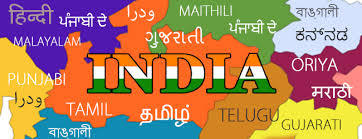
Moreover, the number of Indian immigrants to the US is definitely growing. In 1980, there were only 206,000 Indian immigrants. On the other hand, in 2015 the number of Indian immigrations reached 2,390,000. The US is the most non-Asian popular location for Indian migrants, with the UK trailing behind at 777,000. This clearly demonstrates that the population of Indian migrants are definitely increasing and will grow in size in the US as the years pass.
With an increasing population that speaks a variety of Indian languages, the popular ones being Hindi and Gujarati, would lead to an increasing need of healthcare for those individuals. However, since for most of those migrants English may not be a language they are comfortable in speaking, they would have a difficult time interacting with healthcare officials, leading to a low quality healthcare treatment.
Taking these two statistics into consideration, it is clear to see that it would be helpful to include an Indian language access service in healthcare so that Indians that are not as fluent in English are able to get proper treatment.

However, while it would be very beneficial to have Indian languages interpreting services in the healthcare field, that would also be very costly. In a paper titled “The Case for Language Access”, Wilson recounts the opinions of several healthcare providers on what would be considered a barrier to expanding their language interpreting service. One of the major points was the fact that the cost of interpreter services was about $30-$400 per hour, which is a very high amount compared to the average Medicaid office visit reimbursement which costs $30-$50. On top of that, hospitals themselves might need to train staff members on language identification and other resources, which also would cost money.
Another point to think about is the fact that English is now widely taught in India and is oftentimes the language classes are taught in, which I know from personal experience. Therefore, for this new generation of youth, they are very much fluent in English if they are from a suburban to urban location, such as the students from this study done in this English-Medium school in Tamil Nadu, India. Office workplaces also tend to use English over the local language because the employees may not know what the other individual speaks, and sometimes is actually seen as more “official” than the local language. Since these children grow up learning English alongside their mother tongue and Hindi (if Hindi is not that mother tongue), and young adults learn to use English as well, then is there really a need for language interpreting services in American healthcare providers?
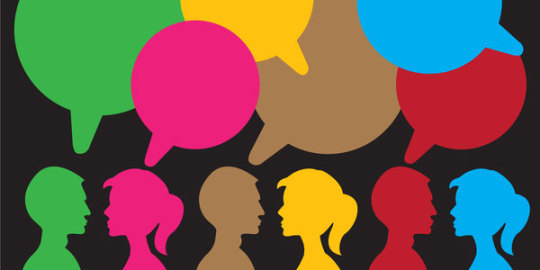
The answer is yes, because those individuals only account for those who live in suburban to urban populations. This data collected by the Worldbank illustrated that in 2016, still 67% of India lives in rural areas. Therefore, it is highly likely that many of their community structures such as schools and workplaces are taught in the local language, and so are not as fluent in English as the individuals that live in the cities or the suburbs. Taking this into consideration, there still are a multitude of Indians who are not comfortable with English and if some decide to migrate to the US, then would have difficulty interacting with healthcare employees here should they need treatment of some sort.
In the next post I will be discussing possible solutions to increase the number of healthcare providers that include an Indian language to their language interpreting services.
photo credits: 1st, 2nd, 3rd
0 notes
Video
youtube
An interview with my mom about the inclusion of Indian languages in the translation/interpretation services offered by healthcare providers.
NOTE: While the video is comprehensible despite many of the non-English portions, it is still suggested to read the transcript down below for a better understanding.
Transcript:
Akhila: Hellow, my name is Akhila. I am from Bangalore. When I first came to the US, I lived in Alabama. I moved to Tampa Florida in the year 2000.
Q: Where are you from?
Akhila: Originally, I came from Bangalore (in Karnataka).
Q: So what language is your mother tongue?
Akhila: My mother tongue that I grew up with is Kannada. Originally, it is one of the south Indian languages, and I have learned it since I was a child, and I am very comfortable with the language. It is a very popular language in Bangalore, Karnataka.
Q: What language do you know best? Rank them.
Akhila: Firstly, I know about three to four languages. The first one I know best is Kannada, after that it’s English. I also know Telugu and Hindi, which in India is used commonly. I know all these languages comfortably, but my mother tongue I am especially comfortable in using.
Q: Was it hard adjusting to English when you first came to America?
Akhila: I did feel that a little bit. In school, we did learn English. However because dialects and accents exist and can change and are different from what we learned, it was a bit hard. Since I was in Alabama, the southern accent was very strong and was hard for me in the beginning to understand. I eventually started to understand slowly but it was still a bit difficult.
Q: What was one of the hardest things about going to hospitals in the south?
Akhila: When we first came to the US, we had to admit our daughter to the hospital when she was a four month year old baby and she wasn’t well and she got allergies very frequently. Once, we admitted her for one week. It was not just us who was facing difficulties. It was hard for the doctors to comprehend our questions locally. We felt that it would be nice if there were some interpretation services offered. Slowly after we started to understand, it took us a couple of days to comprehend what the medications the doctors were prescribing, what doses to give. Things like these were challenging to face.
Q: What are some of the advantages and disadvantages to learning English in India?
Akhila: There are a lot of advantages. In India, we learn proper English. To understand slangs and all that is hard and takes time. We communicate using proper English and making sentences were also proper as well. In a way, at least we knew the language, is what we thought. It helped that we knew the language, despite the strong accents. As for disadvantages, it goes both ways. Doctors felt the same difficulties we did when trying to communicate with us. So, in a way, no matter how or where you go to learn an Indian language, wherever in the world you go, every country speaks their own language and has their own dialects within that language and the way they speak things is very different. So that is something that we need to catch up on as years go by.
Q: What Indian languages do you think are the most widely spoken in the US?
Akhila: For the spoken Indian languages in the US. Predominantly, it is the Gujarati and Hindi languages. Lastly, Telugu. All of those are not my mother tongue, but one or two of those three I have fluency in them. I don’t speak Gujarati at all, despite it being one of the most popular Indian languages in the US. Gujarati is spoken in the state of Gujarat in India. Lot of people come from there, so they have their language domination here. Hindi I can speak, and almost all of India can speak Hindi as well. Everywhere when they introduce themselves as an alternate language, they use Hindi. It definitely helps a lot of people.
0 notes
Text
Culturally Complex Scenario #1
You are a doctor at a hospital. One day a woman in an Indian sari walks in looking desperate for help, but there are no outward signs of bruises or illness. You ask her what the problem is, and she responds, however it is not in English. It is not a language you understand at all. You ask if she knows any English, however the only English she knows is to say that she does not know any English. She continues to look as if she needs help, however you do not know what she needs help with. The hospital only offers translation services for French and Spanish, and you know the language she speaks is not one of those two. What do you do?
Options:
A: Send her back, because she does not look injured or ill.
B: You know a nurse that looks vaguely south Asian, so you call her because she would obviously speak the same language as the patient.
C: For the time being, use hand signals to communicate so you can figure out what’s wrong and help her, despite it taking a long time. If needed, you ask your colleagues if they can identify the language that the woman speaks.
0 notes
Text
Language Access
Language Access are programs in various fields that allow for people that are are limited English proficient (LEP) to be able to interact and communicate effectively within their local community in the States, despite being not as fluent in English.
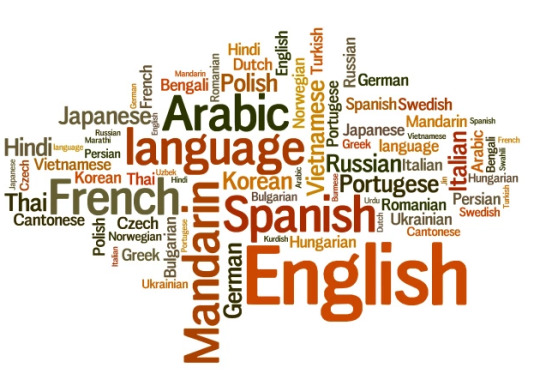
Language Access services are also a prominent part of the healthcare field. Since America is a very diverse country, naturally a few language services are offered so that the patient and health expert are able to communicate and the patient is able to receive treatment as smoothly as possible.
These language interpretation programs carry great importance in the healthcare field because millions of Americans are considered LEP. The Jacobs study found that patients who had interpreting services had more prescription writing, office visits, and rectal exams than the group that did not have interpretation services at all, because the medical official was able to understand and communicate efficiently with the patient. Therefore, it is evident that interpretation services help make a difference in the effectiveness and quality of the healthcare treatment.

There are four processes in which many hospitals and other healthcare locations provide translation/interpretation services. Those include over-the-phone interpreters (OPI), staff interpreters, contract interpreters, and bilingual staff. A study done by the AHA Solutions webinar in 2009 illustrated a variety of results in correlation to language services. For instance, 92% of healthcare providers have language services, and the most popular one provided was over-the-phone. Despite 92% of healthcare providers stating that they provide language services, only 55% of the respondents said that they do. Furthermore, the main obstacle for healthcare providers is that there were not enough interpreter service staff. Also, 19% of the healthcare providers use family members to translate, rather than actual staff, despite it being against the recommendation of the Department of Health and Human Services.
Taking this data into consideration, it is clear to see that one of the main weakness of healthcare language interpretation services is that there is not as strong as emphasis on language interpretation services. Which is a primary reason why the majority obstacle was a small interpreting staff, and so not as inclusive to the languages spoken in the US as what would be satisfactory. This would lead to using family members of the patient to translate, which is seen by that 19%.
Photo credits: language spread, hospital
0 notes
Text
What actually is the Indian language?
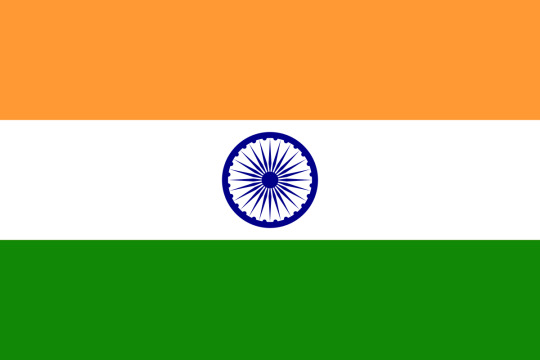
As I grew up, I realized that for being from a nation with the second to largest population in the world, there is not much people know about India. One of those things include the actual language, or languages that Indians speak.
To start, Indians do not speak “Indian”, because Indian isn’t an actual language. India is made up of 29 official states and seven union territories. Some states include Karnataka, Andhra Pradesh, Goa, Uttar Pradesh, etc. The regions that the states are in also usually speak their own language as well. For instance, individuals who live in Uttar Pradesh and a few other northern states would speak Hindi as one of their main languages, but down south in Karnataka, Hindi is not one of the primary languages spoken, rather it is another Indian language known as Kannada. Therefore, the Indian language that is spoken depends on the region of India that one is in. On top of that, each state will not speak only one language, rather two or three, depending on the neighboring states and what language they speak. For instance, my mother was born in Karnataka, so growing up she learned to speak Kannada, Telugu (the language of the neighboring state Andhra Pradesh), Hindi, and Tamil (the language of the other neighboring state Tamil Nadu). Like that, there are around 415 Indian languages, but 23 of those languages are recognized by the Indian Constitution. One interesting thing to note is that while Hindi is the most recognizable Indian language and is recognized as the language of the Indian government, it is not the actual “National Language” of India, because there is not one.

One thing that many people wonder is how exactly did so many languages originate from one country? Morris Swadesh, in his work “The Origin and Diversification of Language” goes into depth on this topic by explaining how even around 1200 B.C, variants of language occurred. Sanskrit was thought of as the “perfected” and “special” language, which was the opposite of the variant forms that the people spoke, which was thought of as “early-made” and “natural”. Moreover, in the sixth century came the rise of Buddha and Buddhism. As a result of Buddhism, India became connected with many other neighboring countries which led to a lingual exchange. Furthermore, the Dravidian branch of languages account for being the origin of much of the languages that are spoken in southern India (Andronov, 2003) and they are categorized based on their region. As for northern India, the languages originated from the Indo-Aryan language family, which originated from the Vedic, and includes Hindi (Bryant, Patton, 2005). Taking this into consideration, it is clear to see that an individual brought up in north India would have a difficult time communicating with an individual from south India, if they did not know English or Hindi.
Speaking of Hindi, it is one of the most recognizable languages in India, and it is oftentimes taught in school and mostly always portrayed in Indian media such as the national news, Bollywood, etc. Therefore, it is obvious that while it isn’t a national language, it still holds a lot of weight as one that is widely-used and popularized. While it is not a language that originated from southern India, it is still popular enough that most south Indians know it or is fluent in it. With this in mind, to consider it as a major Indian language is definitely evident and should be thought of as so.
Photo credits: Indian flag, Map of official languages of each state
1 note
·
View note